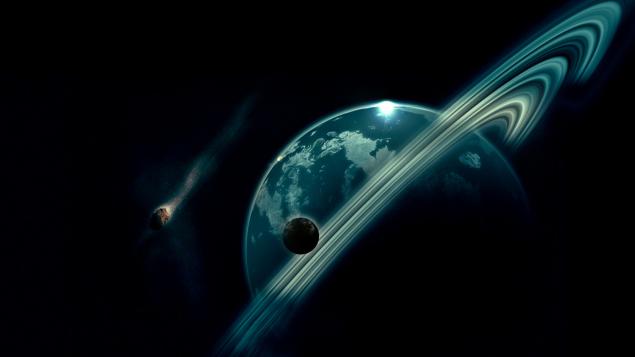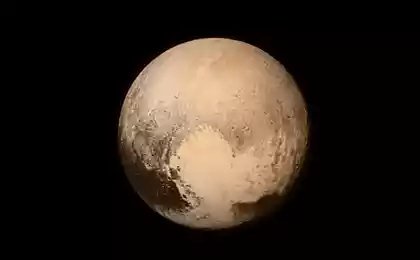726
Planet X
Planet 4 times the size of Earth, may be on the edge of the solar system, beyond Pluto, according to new research. Located too far away, so it can be seen in ground-based telescopes, the invisible planet is capable of gravitationally attract objects that pass beyond Neptune, helping to explain the unusual orbits of these bodies.
2 Picchu + text

The discovery was made by Rodney Gomes (Rodney Gomes), the famous astronomer from the National Observatory of Brazil in Rio de Janeiro.
A few years scientists watched as a group of small icy bodies located in the scattered disk beyond Neptune's orbit deviates from the trajectories around the sun, expected in the calculations that take into account the gravity of all known objects in the solar system.
However, when Gomez spent the same calculations with the addition of the gravitational effects of a massive planet on the edge of the solar system, the orbits of anomalous objects coincided with the observed.
At the same time, there are scientists who believe that the euphoria of the opening of the new planet prevents investigators nominate others really plausible explanation trajectories of these bodies.
But ultimately all agree that the only way to confirm or refute these hypotheses - observe, monitor and observe again.
Source here: www.astronews.ru/cgi-bin/mng.cgi?page=news&news=2341

Source:
2 Picchu + text

The discovery was made by Rodney Gomes (Rodney Gomes), the famous astronomer from the National Observatory of Brazil in Rio de Janeiro.
A few years scientists watched as a group of small icy bodies located in the scattered disk beyond Neptune's orbit deviates from the trajectories around the sun, expected in the calculations that take into account the gravity of all known objects in the solar system.
However, when Gomez spent the same calculations with the addition of the gravitational effects of a massive planet on the edge of the solar system, the orbits of anomalous objects coincided with the observed.
At the same time, there are scientists who believe that the euphoria of the opening of the new planet prevents investigators nominate others really plausible explanation trajectories of these bodies.
But ultimately all agree that the only way to confirm or refute these hypotheses - observe, monitor and observe again.
Source here: www.astronews.ru/cgi-bin/mng.cgi?page=news&news=2341

Source:
























